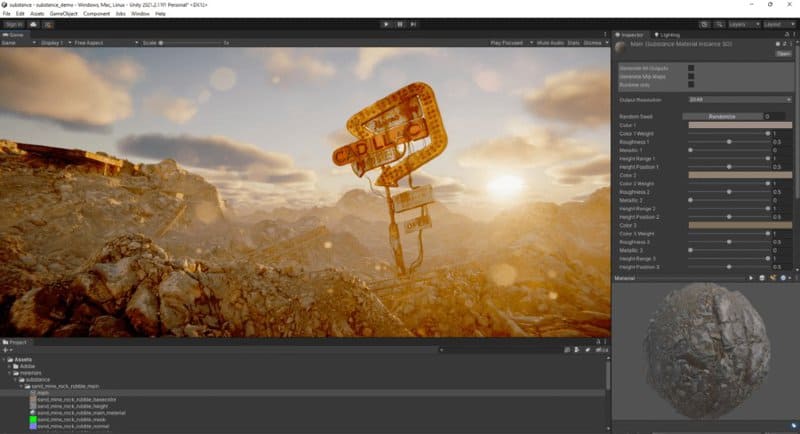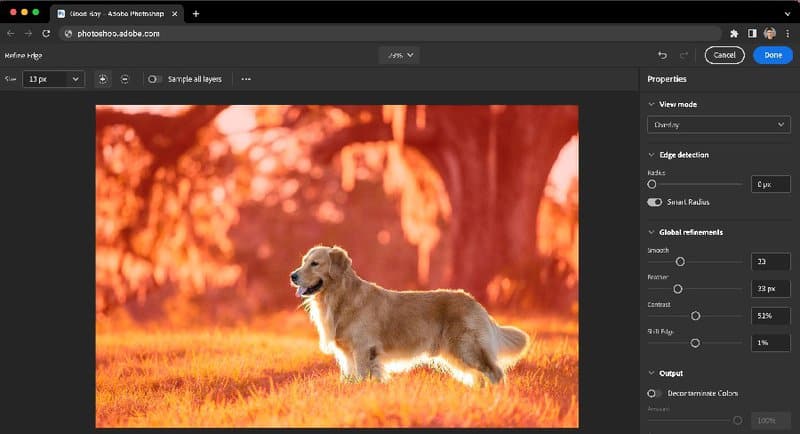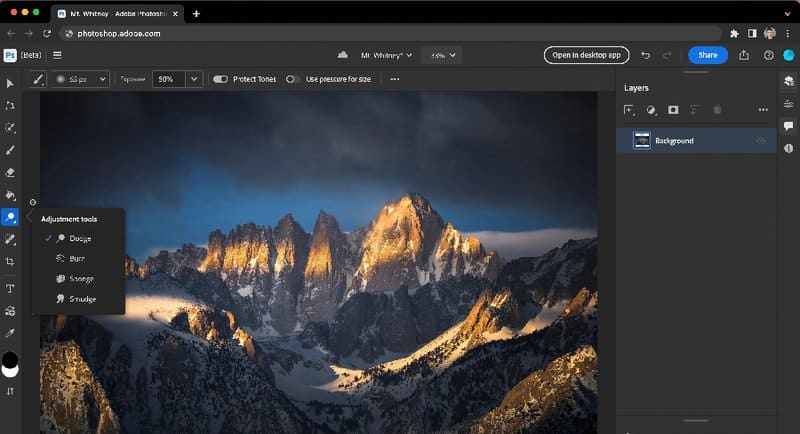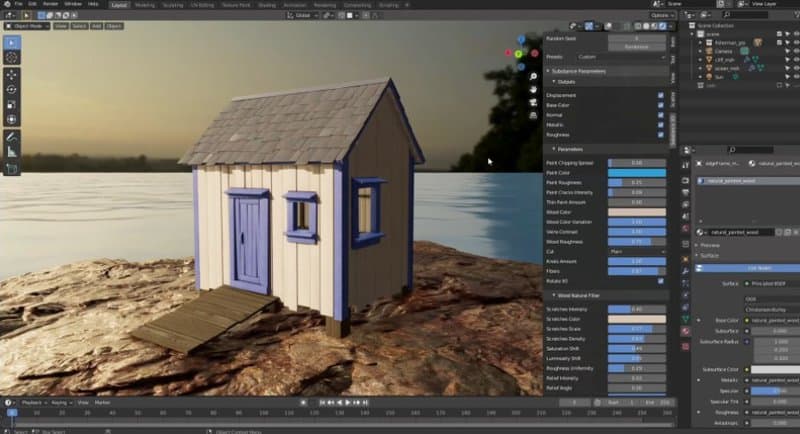Adobe has announced major updates to Adobe Substance 3D – a suite of tools and services that support 3D content creation from the beginning to the end of your project – expanding on the tools’ extensibility and performance.
Updates include a 3D Materials SDK for developers, powerful new plugins, and native Apple M-series chips support for Painter, Designer, and Sampler. The company also previewed innovations from Adobe Research focused on new ways to design, create, and deliver engaging and realistic immersive experiences, and showcased how leading brands are using Substance 3D tools to build unique customer experiences. Additionally, Adobe announced that Substance 3D applications will be free to teachers and students worldwide.
Scott Belsky, chief product officer and executive vice president of Adobe Creative Cloud speaking at a customer event in Paris: “Smart brands are getting “metaverse-ready” by growing their 3D and immersive content creation capabilities. That means that creative artists with expertise in 3D have a wealth of opportunities. These innovations provide new superpowers to the rapidly growing number of creative people using Substance 3D.”
Substance 3D Collection for Powering 3D and Immersive Experiences
The growing importance of 3D and immersive content has contributed to strong demand for Substance 3D tools across gaming, entertainment, and e-commerce industries. 3D content creation also continues to grow into a core skill for creative professionals as more brands prepare for the metaverse and other immersive experiences. Substance tools have seen a strong 100 percent year-over-year growth, with now hundreds of thousands of monthly active users.
Adobe announced multiple updates across the Substance 3D Collection, including:
• Native Apple M-series chips support for Substance Painter, Designer and Sampler, enabling 3D content creators to work faster than ever before. All three tools are part of the Substance 3D Collection, the only end-to-end solution for 3D visuals and experiences.
• To make the power of Substance materials as accessible as possible, a new Substance 3D Materials SDK allows developers to write their own plugins and use the Substance 3D Material and Model engines inside other applications. A new Substance 3D Automation Toolkit provides features for automating Substance files-based tasks.
• A Substance Materials Plugin in Photoshop joins an existing plugin for Illustrator – which is already used by hundreds of thousands of Illustrator users – and helps save users time and eliminates numerous steps needed to create texture and design variations and 3D effects. The latest update to the Substance 3D Plugin for Unity enables artists to load, apply and modify Substance parametric materials directly inside the Unity engine, a development platform for creating 2D and 3D multiplatform games and interactive experiences.
• Expanding capabilities into 3D sculpting workflows, Adobe will also release Substance 3D Modeler to customers later this year. Modeler introduces an intuitive approach to 3D modeling that frees users from previously complex and technical constraints. The desktop and VR tool enable a vast range of creative possibilities, including the creation of concept art, sketching and prototyping, the crafting of detailed characters or props, or even sculpting an entire scene.

Sebastian Berg, head of digital excellence at HUGO BOSS AG, said: “Incorporating Adobe Substance 3D into our product design and development processes has unlocked a new level of creative freedom for the HUGO BOSS team.
“The emergence of the Metaverse presents exciting opportunities for the fashion world, and Adobe Substance 3D tools are an integral part of our approach, as we execute on our plan to develop 80% of our collections on a digital basis by the end of this year,” he added.
Guillaume Meyzenq, SVP consumer category running, outdoor and Sportstyle, Salomon, said: “Visualisation is one of the keys to success in accelerating decision making, strengthening the link with creative direction and reducing our time-to-market by validating the product in the marketing touchpoints. The Adobe Substance tools allow us to reinforce the user experience, offer us a lot of flexibility and a reduced adoption time for the designers by importing digital assets from other tools.”
Bay Raitt, a 3D graphic novelist and principal UX designer at Unity, said: “The mix of simplicity and raw power of what I can do in Adobe Substance 3D Modeler is staggering. It’s the gold standard for two handed sculpting. With a set of perfectly chosen controls, Modeler is deceptively simple to use, but as your skills improve it is worthy of deep mastery for even the most dedicated sculpting and world building tasks.”
New Adobe Research Innovations for Future Metaverse Experiences
Adobe Research, a world-class organisation with research scientists, engineers, artists, and designers who shape experimental ideas into innovative technologies, previewed research projects designed to power future Metaverse experiences:
• New AR and 3D shopping tools from Adobe Research and Adobe Commerce bring rich online information to the in-store shopping experience. Customers can scan products on their mobile devices to access personalised shopping insights, product price comparisons, reviews, and product details. This helps customers make better in-store purchasing decisions and gives retailers the tools to adapt to customers’ needs in real-time. B2B companies can also use this technology to optimise warehouses.
• Adobe previewed a new intelligent method for optimising load time while maintaining visual fidelity for optimal AR customer experiences. The new AI-powered approach allows brands to deliver a high-quality AR experience in a fraction of the time it would normally require by prioritising AR content that is most likely to be relevant to the viewer first based on their movements within the physical space. This will help brands alleviate the common challenges stemming from slow load times on large AR scenes. This technology will be integrated into Adobe Aero later this year.
Adobe advances Photoshop and Lightroom with multi-surface updates
In addition to the advances to Adobe Substance 3D, the company also unveiled major updates to Creative Cloud applications Photoshop, Lightroom and Lightroom Classic, delivering significant new features, benefits and value to customers.
The updates deliver new editing and usability enhancements to Photoshop on the Web (beta), leverage Adobe Sensei AI and machine learning to help simplify complex workflows for creatives and streamline cross-device (desktop, web and mobile) collaboration workflows for Photoshop and Lightroom users.

Scott Belsky, chief product officer and executive vice president of Adobe Creative Cloud, said: “These innovative, AI-driven features for desktop, web and mobile make it fast and easy to create great images anywhere with Photoshop and Lightroom.
“We’re continuing to add new capabilities to Photoshop on the Web, making it not only a great way to collaborate on projects but also to facilitate key edits in your browser.” Belsky unveiled these updates from a customer event in Paris.
They include:
AI-Powered Innovations and Expanded Workflows in Photoshop
Neural Filters in Photoshop put the power of cutting-edge AI and machine learning into the hands of creatives. Built to help lower barriers to creativity, Neural Filters have emerged as one of Photoshop’s most popular AI-powered tools. They dramatically reduce complex workflows into easy-to-use, transformative solutions for photo editing and manipulation. Over 300 million Neural Filters have been applied to creative work by more than four million creatives to date.
Adobe previewed a powerful new Photo Restoration Neural Filter designed to help users bring old or damaged photos back to life by detecting and eliminating scratches and other minor imperfections in seconds.
Adobe also announced updates to Photoshop on the web (beta) including:
• New, easy-to-use editing features like Curves, Refine Edge, Dodge and Burn, and Smart Objects conversion;
• Mobile browser access for fast and easy reviewing and commenting;
• Onboarding and learning content for new creatives and citizen creators who were previously unfamiliar with Photoshop; as well as
• Performance and UX enhancements
Powerful New Features Across Lightroom Ecosystem
The updates to Lightroom and Lightroom Classic deliver powerful new editing capabilities and time-saving workflows for photographers. Notable additions include:
• The ability for photographers to quickly trim and apply edits to video clips in Lightroom using the same editing sliders and presets used on photos (desktop and mobile);
• AI-powered Adaptive Presets for applying different effects to distinct parts of a photo (Lightroom desktop, Lightroom Classic, Adobe Camera Raw);
• Key workflow enhancements for adjusting intensity of presets (Lightroom desktop, mobile, web, Lightroom Classic) and comparing photos side-by-side (Lightroom desktop);
• AI-powered Auto Red Eye Removal (Lightroom desktop and Adobe Camera Raw);’
• New Premium Presets (Lightroom desktop, mobile, web, Lightroom Classic and Adobe Camera Raw); and
• Expansion of Remix capabilities to Lightroom mobile and web.

